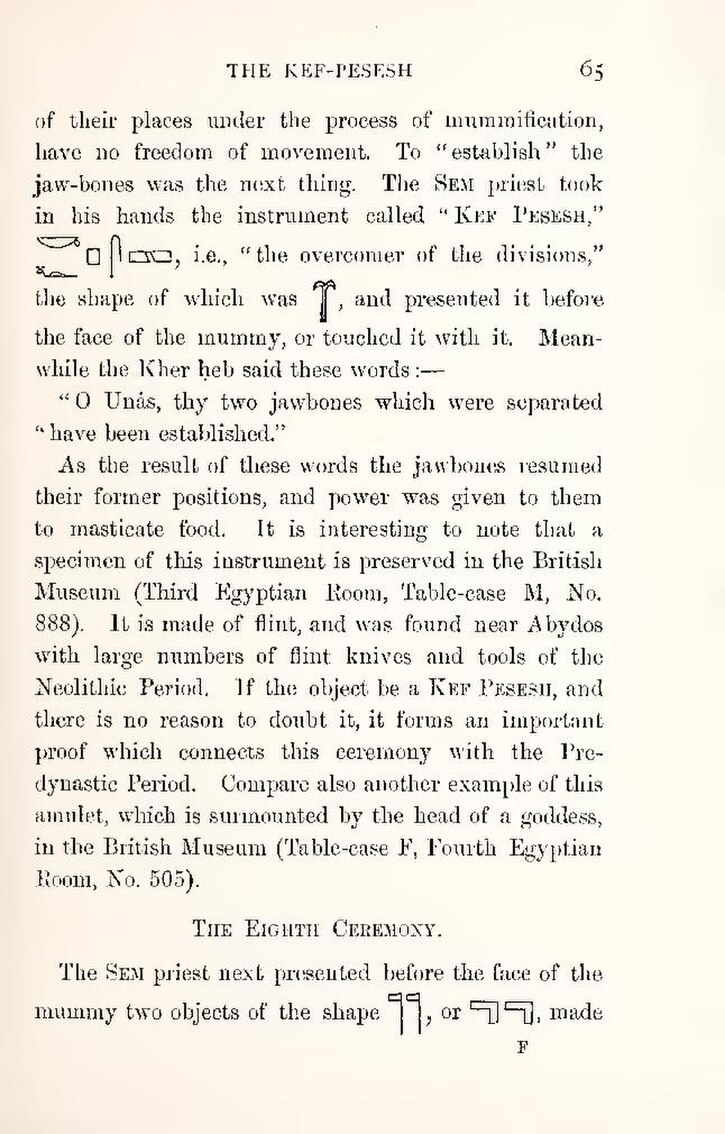of their places under the process of mummification, have no freedom of movement. To "establish" the jaw-bones was the next thing. The Sem priest took in his hands the instrument called "Kef Pesesh,"
|
, i.e., "the overcomer of the divisions," the shape of which was
|
, and presented it before the face of the mummy, or touched it with it. Meanwhile the Kher ḥeb said these words:--
"O Unȧs, thy two jawbones which were separated have been established."
As the result of these words the jawbones resumed their former positions, and power was given to them to masticate food. It is interesting to note that a specimen of this instrument is preserved in the British Museum (Third Egyptian Room, Table-case M, No. 888). It is made of flint, and was found near Abydos with large numbers of flint knives and tools of the Neolithic Period. If the object be a Kef Pesesh, and there is no reason to doubt it, it forms an important proof which connects this ceremony with the Predynastic Period. Consider another example of this amulet, which is surmounted by the head of a goddess, in the British Museum (Table-case F, Fourth Egyptian Room, No. 505).
The Eighth Ceremony.
The Sem priest next presented before the face of the mummy two objects of the shape
| |
, or
| |
, made
